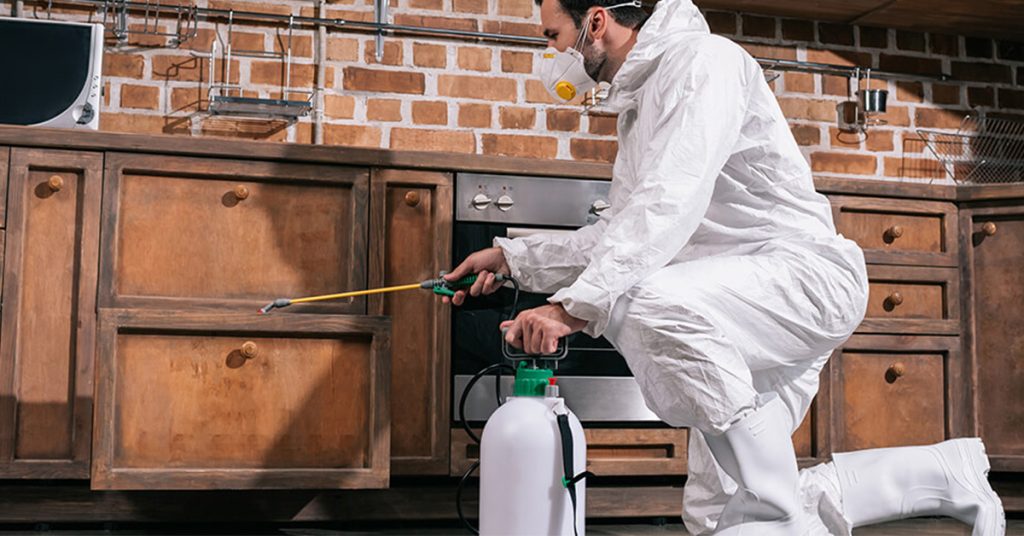Discovering Problem and Treatment Methods in the World of Pest Control
The landscape of bug control includes a myriad of challenges, specifically as invasions of usual home bugs continue to develop. By integrating preventative procedures with sophisticated management methods, such as Integrated Parasite Monitoring (IPM), house owners can better secure their environments.

Common Household Pests
When it concerns handling our space, comprehending usual family parasites is essential. These bugs not just disrupt our comfort yet can also pose health and wellness risks and damage building. The most common home parasites consist of ants, roaches, rodents, termites, and bed insects.
Ants, often seen foraging in cooking areas, can infect food and develop large swarms. Rodents, including computer mice and rats, can cause structural damages and bring illness like hantavirus and salmonella.
Recognizing the signs of these parasites, such as droppings, nests, or bite marks, is vital for very early intervention (Pest Control Lockhart). Appropriate sanitation techniques, securing entry points, and maintaining a clutter-free atmosphere work preventative procedures. By determining these typical house parasites and recognizing their habits, house owners can take positive steps to reduce invasions, making certain a healthier living atmosphere
Recognizing Pest Infestations
Insect problems can escalate promptly, transforming a small annoyance into a significant trouble if not addressed immediately. Usual elements adding to infestations consist of inadequate sanitation, structural vulnerabilities, and seasonal modifications that drive bugs indoors.
Determining the kind of bug is essential, as different varieties exhibit diverse behaviors and reproductive rates. For circumstances, rodents might establish nests in surprise areas while pests like cockroaches prosper in damp atmospheres. Early detection typically rests on identifying indicators such as droppings, chomp marks, or uncommon sounds, which can indicate a trouble before it comes to be serious.
Warm, moist climates can assist in the quick growth of bug populations, while modifications in landscape design or building can unintentionally produce helpful settings. An informed strategy to understanding these characteristics lays the groundwork for efficient pest monitoring strategies in the future.
Treatment Approaches and Techniques
Reliable treatment approaches and techniques are important for minimizing bug problems and recovering a secure setting. A diverse strategy is frequently best, integrating chemical, biological, and mechanical techniques tailored to the certain insect and the severity of the invasion.
Chemical therapies include the use of pesticides and herbicides, which can efficiently get rid of bugs. Proper application and adherence to safety guidelines are critical to decrease risks to human beings and non-target Related Site microorganisms. Integrated Parasite Monitoring (IPM) urges the judicious usage of chemicals as a last resource, counting rather on surveillance and threshold levels to establish treatment demands.
Organic control techniques involve introducing all-natural predators or parasites to lower insect populaces. This technique is significantly popular, particularly in farming setups, as it advertises ecological sustainability.
Mechanical approaches, such as traps and obstacles, give immediate remedy for pests without presenting chemicals. Choices consist of sticky catches for pests or physical barriers for rodents.
Eventually, the choice of treatment technique ought to think about the particular parasite, the atmosphere, and potential influence on human health and wellness and environments. A well balanced mix of these strategies can efficiently take care of invasions while advertising lasting parasite control options.
Safety Nets for Residence
Proactively attending to parasite concerns prior to they escalate is important for preserving a healthy home environment (Pest Control Lockhart). Carrying out effective preventive procedures can substantially reduce the likelihood of problems, eventually guarding both your property and health

Proper landscaping additionally plays a vital function in prevention. Keeping shrubs and trees cut away from your house reduces the chances of insects discovering their way inside your home. In addition, ensure that drain systems are operating effectively to stop standing water, which can reel in insects and other bugs.
Last but not least, regular evaluations are advisable. Frequently looking for indicators of insect task enables early intervention. By taking on these safety nets, house owners can develop an environment that is much less friendly to insects, therefore enhancing their overall top quality of life and reducing the need for considerable pest control treatments.
Industrial Insect Control Approaches
An extensive strategy to commercial parasite control is vital for organizations aiming to preserve a risk-free and hygienic atmosphere. Reliable techniques include a combination of regular assessments, worker training, and the implementation of Integrated Pest Administration (IPM) techniques.
Regular inspections allow early detection of parasite task, allowing Continued for timely treatment. Businesses ought to create a regular schedule for these assessments, focusing on high-risk areas such as kitchen areas, storage spaces, and waste disposal websites. Staff member training is equally important; team must be educated on the signs of bug infestations and the relevance of reporting them promptly.
Implementing IPM methods helps minimize bug concerns sustainably. This includes habitat adjustment, such as securing entry factors and minimizing clutter, as well as utilizing all-natural deterrents prior to considering chemical therapies.

Moreover, working together with an look here accredited bug control copyright makes certain accessibility to professional understanding and innovative therapy alternatives. This collaboration can cause customized bug control intends tailored to the particular requirements of business, reducing dangers and enhancing total efficiency. Ultimately, an aggressive and enlightened strategy cultivates a pest-free atmosphere, guarding both public wellness and service track record.
Conclusion
In conclusion, reliable parasite control requires a thorough understanding of common house insects and their actions, paired with targeted therapy approaches. Carrying out preventative procedures alongside therapy techniques such as Integrated Bug Monitoring and organic control enhances the ability to mitigate infestations.